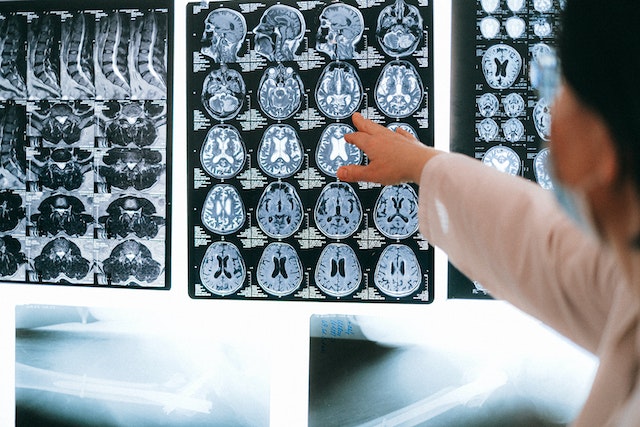In 2011, a large study examined the use of x-rays and other radiation imaging on children—they estimated that the average child would get more than seven radiation scans by the age of 18. No doubt, then, that the role of a pediatric radiologist is important in accurately diagnosing and treating diseases and conditions in children. Their specialized knowledge, expertise in radiation safety, and collaboration with other healthcare professionals contribute to the well-being and optimal care of pediatric patients. It’s estimated that only 3% of all radiologists in the US are pediatric radiologists, making this a small subspeciality. In this article, we will review the role and responsibilities of a pediatric radiologist.
A pediatric radiologist is a specialized medical doctor who focuses on using medical imaging techniques to diagnose and treat diseases and conditions in infants, children, and adolescents. They have expertise in interpreting and analyzing imaging studies specifically related to pediatric patients.
The role of a pediatric radiologist involves the following:
Interpreting Imaging Studies: Pediatric radiologists review and interpret various imaging studies such as X-rays, ultrasounds, computed tomography (CT) scans, magnetic resonance imaging (MRI), and nuclear medicine scans. They analyze the images to identify abnormalities or signs of disease. If you choose to work with Vesta Teleradiology, we have US board certified radiologists that handle subspecialty preliminary and final interpretations in pediatric imaging.

Diagnosing Diseases and Conditions: By studying the imaging results, pediatric radiologists can diagnose a wide range of diseases and conditions that affect children. This can include congenital anomalies, infections, tumors, fractures, organ abnormalities, and other medical conditions.
Minimizing Radiation Exposure: Pediatric radiologists are particularly mindful of the potential risks associated with radiation exposure in children. They employ techniques and protocols that minimize the amount of radiation used during imaging procedures, ensuring the safety of young patients while still obtaining the necessary diagnostic information. For example, when appropriate, pediatric radiologists may use lead shields or aprons to protect sensitive areas of a child’s body that are not being imaged. This helps minimize unnecessary radiation exposure to healthy tissues. They also undergo specialized training in pediatric radiology, which includes radiation safety and dose optimization techniques.
Guiding Treatment Decisions: Pediatric radiologists collaborate with other healthcare professionals, including pediatricians, surgeons, and oncologists, to help guide treatment decisions. The imaging findings they provide play a crucial role in determining the most appropriate course of treatment.
Performing Image-Guided Procedures: In addition to interpreting images, pediatric radiologists may also perform image-guided procedures. These procedures can include biopsies, drainages, and minimally invasive interventions. They use imaging technology to guide their instruments and ensure precise placement.
Collaboration and Consultation: Pediatric radiologists work closely with other healthcare professionals, including referring physicians, to discuss imaging findings, provide recommendations, and answer any questions. They may also consult with pediatric subspecialists to provide further expertise in specific areas of pediatric radiology.
Overall, the role of a pediatric radiologist is vital in the accurate diagnosis and appropriate management of medical conditions affecting children. Their specialized knowledge and skills in pediatric imaging contribute to the well-being and treatment outcomes of young patients.
Sources:
https://pubmed.ncbi.nlm.nih.gov/16357371/
https://www.cbsnews.com/sacramento/news/average-child-may-get-7-radiation-scans-by-age-18/
